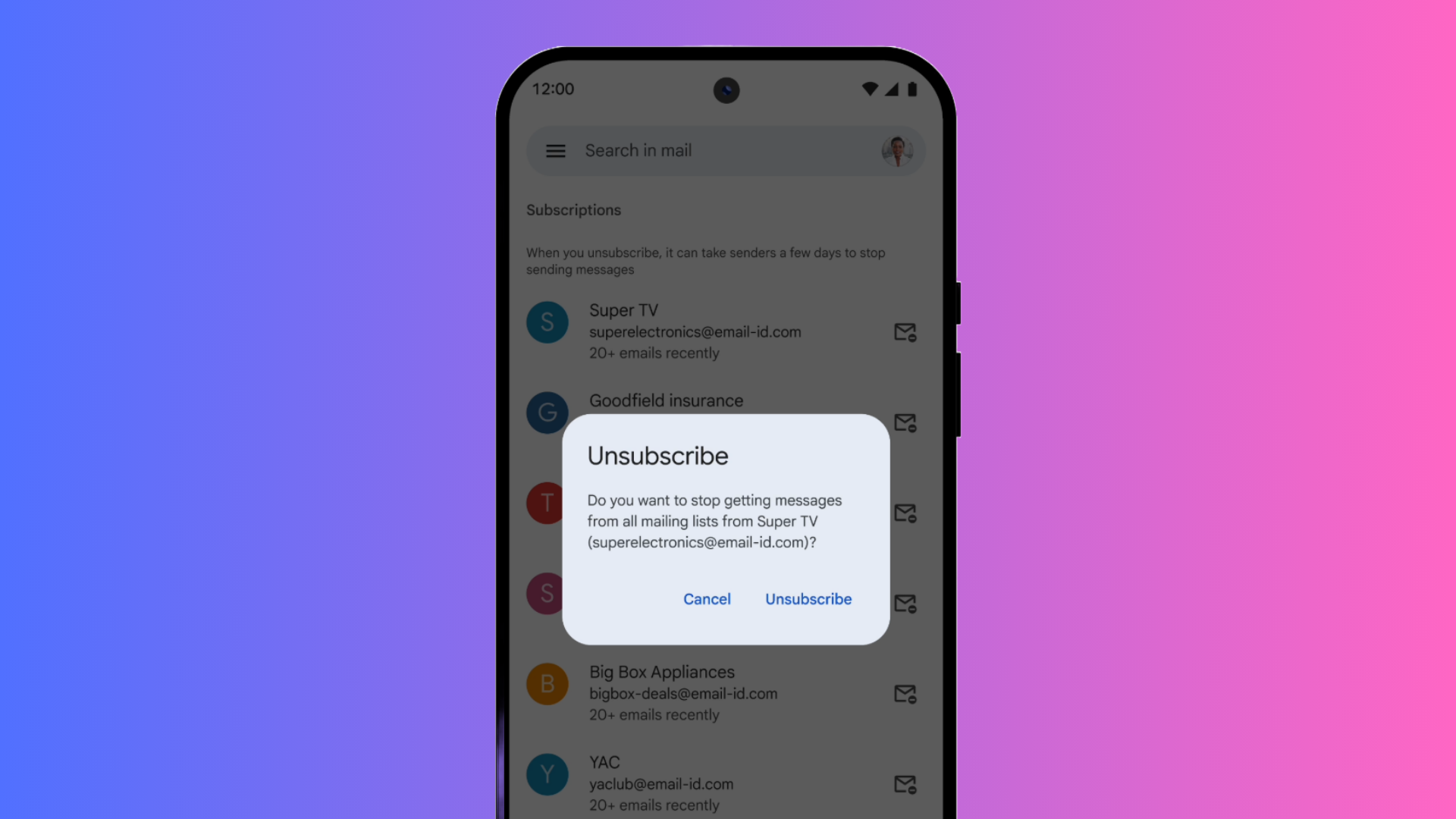Lately, it feels like almost every Gmail update has been about AI, but Google’s finally giving us a free, non-AI update that may be more useful than any of its Gemini tools. Finally, you can stop stores and newsletters from spamming your inbox every couple of minutes.
We’ve all been there: You’re signing up for an account somewhere, or checking out on some specialty website, and you accidentally forget to uncheck the “Remind me about special offers or promotions” box. Bam, you’ve suddenly been signed up to get daily deal and promo alerts sent to your inbox for life. Sometimes, these can be helpful. But if you’re like me, you just tune them out, and also get so many that it’s a chore to actually delete them all.
Gmail’s tried to deal with these in the past by banishing them all to a separate “Promotions” feed, but that won’t save you from getting notifications about them, and it won’t stop them from coming in. Now, with the “Manage Subscriptions” view, you’ll actually have control over these emails.
This view, which you can find by clicking the navigation bar in the top-left corner of your inbox and selecting “Manage Subscriptions,” will bundle all of these annoying, spam-adjacent messages in one place. So far, that’s nothing to write home about. But it’ll also put a small icon next to each email that looks like an envelope with a minus symbol in the bottom right corner. Click it, and you’ll be able to unsubscribe from that mailing list with one button.
Finally, I can save my inbox without having to painstakingly sort through my Promotions tab and block each individual sender. Sure, nothing here is automatic, at least beyond the sorting. But that’s likely to keep important emails from getting lost in the shuffle. The approach here is similar to one taken by a popular encrypted email client called Proton Mail, and given that we like that app so much we recommend paying for its extra features, it’s probably a good sign that Google is taking notes from it.
It may take some time before you see this update in your inbox, though. It has started rolling out to Gmail on the web, Android, and iOS already, but it’ll take a bit more time to hit most people. Even then, it’s limited to “select countries” for now, with no details on which countries, or why certain regions are being left out.
